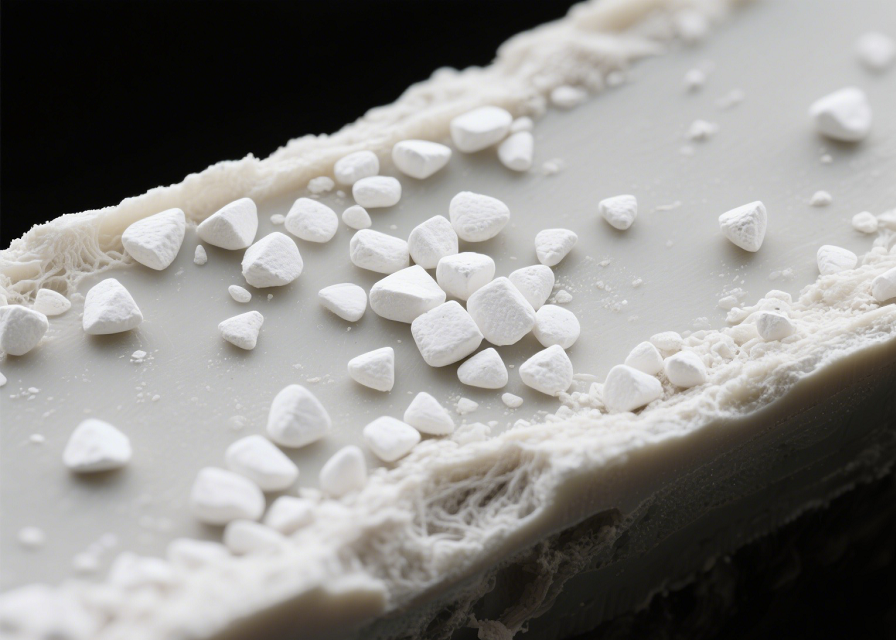Magnesium hydroxide (Mg(OH)₂), as an excellent inorganic additive, is widely used in the plastics industry, especially playing a key role in flame retardancy, environmental protection, and material modification. Its specific applications are as follows:

Application of Magnesium Hydroxide in Plastics
1. Flame Retardant Function: Enhancing the Fire Safety of Plastics
- Flame Retardant Mechanism:
Magnesium hydroxide decomposes at high temperatures (2Mg(OH)₂ → MgO + 2H₂O↑). This process absorbs a large amount of heat, which can reduce the surface temperature of plastics and delay thermal decomposition; the water vapor generated by decomposition can dilute oxygen and flammable gases around the plastics, inhibiting combustion; the generated magnesium oxide (MgO) will form a dense thermal insulation layer on the plastic surface, further blocking heat and oxygen, achieving a chain effect of “flame retardancy – combustion suppression – self-extinguishing”. - Applicable Plastic Types:
It is suitable for various plastics such as polyethylene (PE), polypropylene (PP), polyvinyl chloride (PVC), ABS resin, and epoxy resin. For example, adding magnesium hydroxide to PE cable materials can make the cables meet the low-smoke and halogen-free flame retardant standards; using it in PP sheets can improve their fire rating in the construction and home appliance fields. - Advantages:
Compared with traditional halogen-based flame retardants, magnesium hydroxide has the characteristics of halogen-free, low smoke, and low toxicity. It does not produce corrosive gases (such as hydrogen halides) during combustion, complying with EU RoHS, REACH and other environmental regulations, and is one of the core materials for “green flame retardancy”.
2. Smoke Suppression and Toxicity Reduction: Reducing Fire Hazards
- During the combustion of plastics, magnesium hydroxide can inhibit the generation of smoke, reducing smoke concentration and the release of toxic gases (such as carbon monoxide and nitrogen oxides). This characteristic makes it particularly important in indoor plastics (such as home appliance shells and indoor decorative materials), which can reduce secondary injuries caused by smoke asphyxiation or impaired visibility in fires.
3. Material Modification: Optimizing the Mechanical and Physicochemical Properties of Plastics
- Enhancing Mechanical Properties:
As an inorganic filler, magnesium hydroxide can combine with the plastic matrix to improve the material’s hardness, rigidity, impact resistance, and wear resistance. For example, adding an appropriate amount of surface-modified (such as treated with coupling agents) magnesium hydroxide to PP can improve its flexural strength and heat distortion resistance. - Improving Heat Resistance and Aging Resistance:
Magnesium hydroxide has good high-temperature resistance and chemical stability, which can increase the thermal deformation temperature of plastics, delay their aging rate in light, humidity, and heat environments, and extend the service life of products. For example, adding it to outdoor plastic pipes and sun visors can enhance their weather resistance. - Reducing Costs:
As a filler, magnesium hydroxide is relatively low in price. On the premise of not significantly affecting plastic performance, it can partially replace resin, reducing raw material costs.
4. Customized Applications in Specific Fields
- Wire and Cable Industry: In low-smoke and halogen-free cable materials, magnesium hydroxide is the core flame retardant, which can meet the requirements of high flame retardancy and low smoke toxicity of cables, and is widely used in construction, rail transit, ships and other fields.
- Electronic and Electrical Field: In plastic shells, connectors and other components, magnesium hydroxide can improve the flame retardant grade of materials (such as UL94 V-0), while avoiding corrosion of electronic components by traditional flame retardants.
- Packaging Materials: In plastics for food and pharmaceutical packaging, the non-toxicity and environmental friendliness of magnesium hydroxide make it a preferred additive, which can enhance the safety and heat resistance of packaging materials.
Application Notes
- Surface Modification: Magnesium hydroxide has strong polarity and poor compatibility with non-polar plastics (such as PE and PP). It needs to be surface-treated with silane, titanate and other coupling agents to improve dispersibility and interface bonding force.
- Addition Amount Control: The flame retardant effect increases with the addition amount, but excessive addition will lead to a decrease in the mechanical properties (such as toughness) of plastics. It is necessary to balance flame retardancy and processability according to specific needs.
- Particle Size Selection: Ultra-fine or nano-sized magnesium hydroxide can reduce the negative impact on plastic performance and improve flame retardant efficiency, but the cost is higher, so it should be selected according to the application scenario.
Summary
Magnesium hydroxide occupies an important position in the plastics industry due to its multiple functions such as flame retardancy, smoke suppression, environmental protection, and modification. Especially under the trend of halogen-free flame retardancy, its application range is constantly expanding. Through reasonable surface treatment and addition amount control, its performance advantages can be fully exerted to meet the requirements of different fields for plastic safety and functionality.
 Magnesium oxide_magnesium hydroxide_magnesium carbonate manufacturer-Zehui Group
Magnesium oxide_magnesium hydroxide_magnesium carbonate manufacturer-Zehui Group


